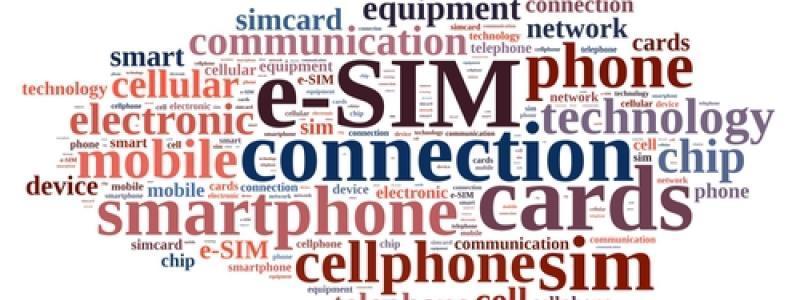Are We Ready For eSIMs?

eSIM is the shorter version of the term embedded SIM, and this piece of mobile technology has the potential of allowing consumers to connect to cell networks more efficiently. But ever since the tech debuted around four years ago, adoption has been slow, mainly because for so long, no consumer friendly specs have been established. Last year, however, the GSM Alliance (GSMA) has published updated guidelines for tech manufacturers to include support for eSIMs. Moreover, with recent collaborations forged by tech giants such as Qualcomm, Intel, and Microsoft to have eSIMs integrated into new generation connected personal computers, many industry watchers believe that in the next few years, more and more devices will have eSIMs.
Most of us are familiar with standard SIM cards (by the way, if you are wondering, SIM stands for subscriber identity module). The SIM typically carries a unique reference identifier that corresponds to a customer’s account (for purposes of billing monthly charges and determining access, limits, caps, etc). SIMs also generally possess some built in storage in order to save data such as phone numbers and text messages.
But it is no secret that SIMs are kind of a hassle, too (they are really small and placing one or ejecting one is often tricky). eSIMs, on the other hand, are directly integrated (hence, the term embedded) into a mobile device’s chip set or even modem. For those who do not want to be locked to a single mobile operator, know that new eSIMs are capable of saving and even adopting different accounts, so consumers can easily switch networks without ever needing to get a separate SIM. This could come pretty handy especially for those traveling to other countries. To date, major US wireless carriers AT&T and T-Mobile (along with more than a dozen mobile operators across the globe) have already stated their intentions of working with Microsoft in order to allow eSIM connected PCs to purchase data from the Windows Store.
Adopting eSIM technology also means device makers will no longer have to dedicate specific space in their products in order to make way for the SIM card tray. Because the eSIM is directly integrated into the processor or modem, smartphones can get thinner, while the physical space optimization will pose an advantage for makers of smartwatches and other wearable devices.
Old technology inevitably makes way for new technology. For mobile users now, they might want to get ready for eSIMs, for better or worse.
Related: So What’s With The New iPad Pro’s Embedded SIM Card?
Related Blog Articles
- Virgin Mobile Now Only Sells iPhones
- Your Guide To The Big Four’s Pre-5G LTE Offerings
- YouTube Now Has 1.5 Billion Logged-In Users Every Month
- Georgia Tech University Publishes Results Of Study On Selfies
- By 2021, Worldwide App Economy Will Grow To $6.3 Trillion, With Users Reaching 6.3 Billion
- Google Makes YouTube’s Uptime App Available To All Users
- DHS Going For Tighter Security Measures Instead Of Expanding Laptop Ban
- Buy The Moto E4 From Republic Wireless And Enjoy A $30 Discount
- Your Guide To Facebook’s Wi-Fi Locator
- Study: We Still Don’t Like Digital Assistants That Much
Related Blog Posts
- Report: Drug users are using wearable devices during binges
- Spotify allows Android users to reorder playlists; Pandora lets users share tunes to Snapchat Stories
- WhatsApp combats fake news with a new forwarded label
- FCC: Today’s improving mobile networks can impact healthcare costs
- Did Apple Music already overtake Spotify in America?


 Menu
Menu